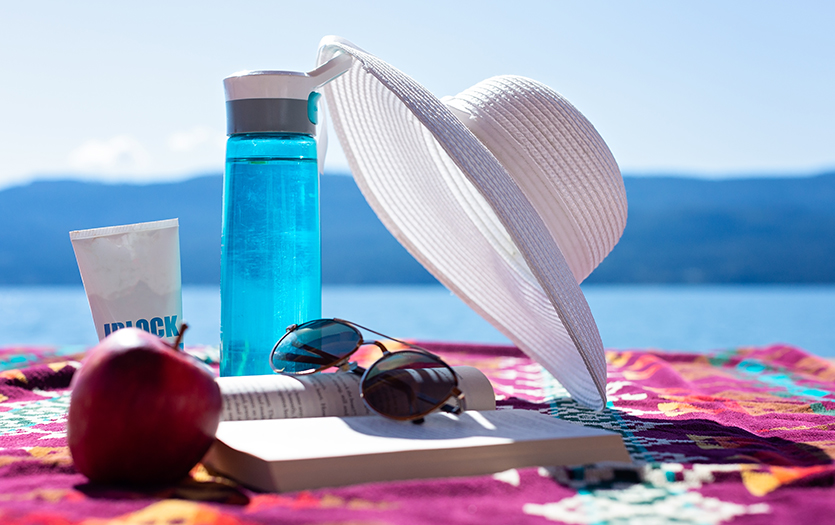
Intense sun, thick, humid air and brutal temperatures can make activity outdoors dangerous during the summer months. Shea Pyle, exercise physiologist, cardiac rehabilitation, Parkview LaGrange Hospital, has some important pointers for staying safe as you sweat this season.
As instances of extreme heat become more and more prevalent in the Midwest, it’s a perfect time to revisit the steps to identify, prevent and treat heat-related illness. It doesn’t matter if you’re mowing the yard, going for a jog or playing golf with friends, if you are outside in temperatures in the high 80s, 90s or higher, you are at risk of a heat-related illness.
High humidity adds to the danger of intense heat. The body’s first line of defense is the evaporation of perspiration that cools the surface of the skin. If the humidity levels are high, evaporation can’t occur and we begin to overheat sooner.
Prevention
If you have to be outside, there are several things you can do to lessen your risk of heat exhaustion or heat stroke. These include:
- Avoid being outside during the hottest part of the day, which is 10 a.m.-4 p.m.
- Wear light-colored, loose-fitting clothes and a broad-brimmed hat
- Drink 8-16 ounces of water 30 minutes before going outside
- Have someone with you, especially if you are working or exercising outside
- During exercise, drink 16-32 ounces of water every hour
- Avoid caffeine and alcohol, both of which may cause you to become dehydrated
- Never leave children or pets in the car for even short periods of time
Added risk factors
Certain groups are at a higher risk for heat-related illness. Among these are children up to age 4, older adults and anyone with a chronic medical condition, such as diabetes, heart disease and high blood pressure. Each of these can mean the individual is impacted quicker by extreme temperatures.
If you are an adult at higher risk and you have to be outside, break your activity up into short stints of 10-15 minutes with a 10-minute break to go inside or relax in a shaded, cooler area.
Heat exhaustion
If you can’t avoid being outside, monitor yourself for signs of heat exhaustion. These include profuse sweating, weakness, dizziness, fatigue, headache, nausea or a rapid heartbeat. Parents with young children should watch them closely for any of these symptoms or unusual behaviors, such as sluggishness or cold, clammy skin.
If you or a loved one begin to experience any of these symptoms, it is important to lower the body temperature. Move inside to rest in a cool or air-conditioned room. Take a cool, but not cold, shower or sponge bath. Drink cool, non-alcoholic beverages, preferably water. Change into lightweight clothing. If the symptoms last for more than an hour, seek medical attention immediately.
Heat stroke
If you or a loved one is experiencing the symptoms of heat exhaustion but has stopped perspiring and have a declined heart rate, this could mean the individual is experiencing a heat stroke. This condition requires emergency treatment. Dial 911 and get into a cool bath or shower or, if outside, spray the individual with a garden hose or sponge off with cool water. Do not consume or give the individual fluids to drink. Continue to try to cool the person until emergency help arrives.
For more information and tips to beat the summer heat, visit The Centers for Disease Control and Prevention website.



